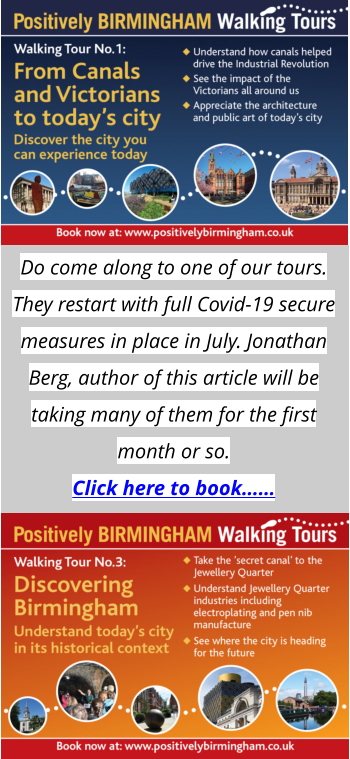By Jonathan Berg
Our walking tours of Birmingham tell of the development of
the city from our medieval past to where we are heading in
the 21st Century. We include open and honest discussions
about our city and certainly, the more murky aspects of the
Industrial and Commercial Revolutions in the 17th and 18th
centuries will be more to the fore on future tours. Modern
interpretations of Birmingham’s historical development have
tended to gloss over the more unsavoury aspects. When we
look at our history with new eyes, things are revealed that
certainly do not fit the ‘easy read’ of an entrepreneurial
environment which became the ‘town of a thousand trades’.
Yes, the simplistic history we often tell sees Birmingham
starting as a market town in medieval times. Using
ingenuity, local Black Country raw materials, and power from
water-mills Birmingham developed production skills and
made things people wanted such as ceramics, leather, and
then metal items. In the 18th century, we became a major
centre of the Industrial Revolution. The explosive growth of
the town caused all sorts of issues that our famous Mayor
Joseph Chamberlain and his Victorian mates sorted out for
us from the 1870s. Our stories tend not to dwell on the darker
sides of our roles in colonial development and links with the
slave trade hardly get a mention. After all, as we learned in
history lessons at school, the Commercial Revolution of the
17th and 18th centuries was centred on a trade triangulation
based on the ports of London, Bristol & Liverpool with West
Africa and the Americas. Produce went to Africa, slaves on to
the West Indies and the Americas. Goods such as sugar,
hemp, tobacco, and rum came back to England….job done.
There is never a mention of Birmingham.
We recognise that Birmingham’s production of knives, guns,
and more general armaments and wartime materials have
been important from medieval wars right up to the 20th
century. However, instead of gun production, for which
Birmingham and the Black Country were hugely involved in
the mid-1700s, we prefer stories of James Watt and his steam
engines and the town’s manufacture of buttons and buckles,
pen nibs and even celebrated Victorian whistles still made
today on the original fly presses.
The Black Lives Matter campaign has changed this forever. It
has fuelled a desire for us to understand more of our past
and ensure the stories we tell give a balanced and less
superficial view. The result is an appreciation of the way the
past is sometimes sanitized for the sake of a happy ‘touristy’
experience; because of course considering the more difficult
aspects of our history is just that…difficult, at a number of
levels! So, let’s get on with it.
Farmer’s Flight … what’s in a
name?
I love our full of surprises Sunday afternoon walking tour. It
heads down the ‘secret canal’ to the Jewellery Quarter,
looking at the development of different aspects of the
historical ‘toy’ industry and shows how the coming of the
canals was so important in bringing the raw materials
needed for the huge expansion in manufacturing. From sole
trader artisans working at a rented ‘peg’, to medium-sized
family business such as Newman Brothers and their brass
works specialising in coffin fittings. Finally, huge industries
moving fast to take ideas and inventions into world-scale
production at an amazing pace. This is a fascinating and
exciting story, and we wonder why the whole of Birmingham
does not want to walk with us! We learn so much about the
successful enterprises that started the Industrial Revolution
and were built upon by Victorian businessmen. The story just
unfolds all around us as we walk. As a tour guide I get a feel
for the way business, even in today’s city, is to an extent
rooted in our past with a ‘got a new idea….come and do it
here’ approach to life.
Researching the tour to the Jewellery Quarter we wanted to
gain an understanding of the Farmer family whose name is
given to the canal flight we walk alongside. The Farmers
were co-owners of Birmingham’s largest 18th Century gun-
making company. Joseph Farmer came to live in Old Square
from Bristol in 1702 and set about manufacturing steel wares
including gun lock springs, sword blades, gun barrels, and
boring tools. His son James took over the family firm and in
1746 his brother-in-law Samuel Galton joined him from
Bristol to help take their business forward.
Moving to London is never
recommended!
Perhaps success went to his head as James Farmer made
some mistakes. First, he left Birmingham and moved to
London – something we always advise on tour is a sign of
poor judgment! Secondly, in London, it did not take him long
to go bankrupt, though he was well protected by fellow
Quaker bankers and soon re-entered Birmingham’s gun-
making business. The ‘letter books’ of the Galton and Farmer
firm are in the Library of Birmingham archives and give an
insight into a company working right at the start of the
Industrial Revolution. Today these also tell much about the
role of Birmingham guns in the slave trade. These archive
materials have been used for several major pieces of
research, with an MSc back in 1972 by one W. A. Richards.
More recently ‘Empire of Guns’ is a mighty work by Priya
Satia, Professor of British History at Stanford University,
which takes the Farmer and Galton company as primary
evidence of the central role of Birmingham businesses in the
slave trade.
Farmer and Galton’s main gun factory in Steelhouse Lane
became the largest of the Birmingham gun makers. This was
and indeed remains, as it still goes on a little in today’s city, a
complex trade, with many components manufactured by
subcontractors in small workshops in Birmingham and the
Black Country. For example, locks were made in Wednesfield
and springs in West Bromwich. Wednesbury became a
centre for gun barrels which lead to expertise in tubing
manufacture still retained today. The complexity of multiple
gun designs was to an extent overcome with standard
component designs demanded by the Royal Ordinance and
the advent of variations of the Brown Bess musket design
which came in various forms and lasted over 100 years. On
top of all this was the complexity of competing with the
protectionist London gun makers. Marketing and sales were
complex, with very different customers from the
Government right through to slave ship captains who
fancied making some private side-deals alongside his major
cargoes.
Guns for the African trade
At times of war demand for Birmingham guns were high,
with orders from the Royal Ordinance to keep up their stock
in the Tower of London and arm multiple wars. In between
wartime production things were difficult for the
Birmingham trade, and supplying arms to West Africa
became hugely important. In 1752 Farmer and Galton were
producing 12,000 guns a year for the African trade and by
1754 the company was overrun with orders and trying to
produce 600 guns a week. Around 50% of production
headed to Liverpool to ‘fit-out’ slave-trading boats with
estimates that 200,000 Birmingham guns a year were being
sent to West Africa alone.
When the guns arrived in African ports along with
Manchester cotton cloth and other products they were used
in place of money to trade for the slaves supplied by African
tribal leaders. Put simply Birmingham guns were directly
exchanged for human beings who had been rounded up to
be sold into slavery. No one can deny that Farmer and
Galton’s origins, growth, and sales were deeply rooted in the
slave trade. The firm was the chief supplier to the formal
African Company and also a range of private merchants.
‘Empire of Guns’ eloquently argues that Birmingham guns
were used as money to pay for the slaves and fundamental
to both the Commercial and Industrial Revolutions.
Attitudes to abolition are key
It is attitudes to the abolition movement that is perhaps the
most revealing. The different views and actions of the Lunar
Society members as the movement grew is of interest.
Samuel Galton Junior (1753-1832) took the gun making
business forward from his father and was one of the younger
members of the Lunar Society which were divided in opinion
regarding the abolition of the slave trade. By the 1790s the
Lunar Society had both abolitionists and those seemingly
more ambivalent with their businesses still inextricably
linked with the slave trade. In ’The Lunar Men’ Jenny Uglow
gently brings out differences in the group. She shows
Thomas Day as an early abolition campaigner with his 1773
poem The ‘Dying Negro’ recalling an African slave awaking
from sleep on board a slave ship and saying:
‘I woke to bondage and ignoble pains
And all the horrors of a life in chains.’
Josiah Wedgwood also comes out as a strong abolitionist
and even checked out the support of other Lunar Society
members, once writing to James Watt and directly
challenging him on his position.
In 1789 Olaudah Equiano visited Birmingham to promote his
antislavery autobiography called ‘An Interesting Life’. He was
welcomed by Lunar Society members Galton, Boulton, and
Priestley. However, the visit did not stop Boulton & Watt from
working up deals with Liverpool slave trader John Dawson to
supply steam engines to Trinidad.
Poor quality Birmingham guns
ridiculed
A section of Birmingham industrialists certainly petitioned
parliament against abolition. One reason given by the gun
making lobbyists was that they would lose markets for the
guns that failed to proof and were turned down by the Royal
Ordinance. This caused controversy and a Board of Trade
inquiry in 1790 heard that the poor quality Birmingham
guns: ‘Kill more out of the butt, than the muzzle’. To
suggestions that Birmingham gun makers dumped proof
failed guns to the African market, the gun makers retorted
somewhat weakly that the Africans loaded too much
powder! Luckily the guns sold to Africa were used more for
showing wealth and as part of funeral customs than as state
of the art weapons. In tribal wars, the guns were there but
blades were the weapon of choice. Indeed the guns sold to
Africa were of such poor quality that exports were still
allowed at times of war. When Galton had a shipment seized
he successfully argued that they were simply ‘trade guns for
Africa, not arms’.
The abolition movement had turned the tables, with poor
quality and dangerous Birmingham ‘trade guns’ becoming a
scandal as they ‘burst when fired and mangle the person
that has purchased them’.
Currency not guns…
The guns sold to West Africa from England are estimated at
150,000-200,000 a year in the latter part of the 18th century.
Their use as a currency was seen across the Empire with the
lack of local currency meaning that items such as sugar
tobacco and other goods were bartered. Birmingham brass
wire was also popular as currency and wire made in
Birmingham ended up as ‘Guinea rods’. In return gold and
silver as well as cotton and indigo and alcohol were all
commodities traded instead of money.
The lack of currency around the colonial world, while partially
overcome by bartering was a barrier to efficient trade. This
was something that one of our ‘Golden Boys’ Matthew
Boulton spent the last thirty years of his industrial career
doing something about. Boulton set up the Soho Mint
alongside his manufactory to address the lack of coinage
both at home and abroad. He had to pay his workers with
money that was often of dubious origin, with the majority of
halfpenny pieces in circulation being forgeries often
produced in Birmingham’s back streets. Boulton coupled the
new James Watt’s rotatory steam engine with precise and
fast coining presses that would revolutionise coin production
for the world. Boulton’s coining adventure has clear links
with gun makers, the Galtons and others helping with
technical expertise and collaboration.
While he petitioned parliament to produce coins of the
Realm he had to wait until 1797 to get his first contract for
George III pennies. In the meantime, he produced tokens
and then coins for customers from around the world. His first
contract was an order for the East India Company for
Sumatran coins where the company had major interests in
spice works with workforces of slaves.
On our walking tours, we stand by the statue of Boulton,
Watt and Murdoch, (or a poster of it while it is in store), using
it to describe the origins of the industrial revolution and the
manufacture of small metal items known as Birmingham
‘toys’. These three gilded gents have acted until now as a
reminder of our industrial roots. We explain that Boulton, the
son of a small-town toy manufacturer, thought big and
produced a large scale manufactory by a water wheel at
Hockley Brook. His entrepreneurial skills and working
practices were certainly formative in the way Birmingham
approached life, perhaps even to this day. He funded
businesses with multiple partners and not one but two
dowries from the Robinson sisters from Lichfield. When it
suited he ruthlessly dropped partners and moved on. He
spotted opportunities, such as the world-beating steam
engine design and manufacturing, persuading James Watt
to come and join him in Birmingham to ‘power the world’.
He was astute enough to see the importance of political
decisions on his businesses. Directly or through
intermediaries he exerted his influence on Parliament to
help with projects as diverse as routes for a new canal from
the Black Country and the establishment of an assay office
for Birmingham.
Of course, these Georgian industrialists that we so revere
today lived in times where commercial and industrial
development was interlinked with the expansionist activities
of the wider nation. Birmingham business could hardly avoid
being involved in the slave trade as it supplied much-needed
goods for the colonialists’ across the developing world. We
know that James Watt senior was involved with the slave
trade with his activities at the Scottish port of Greenock. As a
young man James is recorded as selling at least one
imported slave to a country house and it is suggested
funding for his training as an instrument maker in London
came from the proceeds of slavery. Meanwhile, Matthew
Boulton certainly entertained those employing slaves in the
West Indies at Soho and this culminated in the purchase of
over 120 steam engines for use in sugar cane plantations
with export starting in 1803. While some suggest that the
Boulton family archives have been sanitized there remains
evidence that Bouton’s businesses were involved with
contracts to slave traders.
‘Golden Boys’ reflect on different
times
To see the statue of slave trader Edward Colston pitched into
Bristol’s floating harbour was certainly a dramatic moment
in the Black Lives Matter campaign. What then of
Birmingham’s memorials and pointers to historical links to
the slave trade in today’s city? Certainly, Farmer’s Flight
should be used to open up a discussion on the role that the
Birmingham gun trade played in supporting the slave trade.
Renaming the flight of locks or keeping the name serve
equally as a basis for Sunday afternoon and weekday school
group discussion on roles of Birmingham in things of which
we are not proud.
What to do about the much loved ‘Golden Boys’ statue of
Boulton, Watt and Murdoch to be placed on a brand new
plinth outside an extended Symphony Hall later in 2020
beside the modernism of the reflective pool? Certainly, we
will use the statue to look at the huge advances during the
so-called ‘Age of Enlightenment’ that these pioneers of the
Industrial Revolution represent. However, we will also point
to the Boulton & Watt business dealings with both gun
makers and slavers, and the production of hundreds of
steam engines for West Indies’ sugar plantations, and what
of complex interactions with the provision of coinage with
contracts with slave trading companies.
Much to consider as we walk this
city
No longer will we introduce the ‘Golden Boys’ as “the non-
controversial statue in Centenary Square” contrasting it to ‘A
real Birmingham family’, Gillian Wearing’s impressive study
of contemporary family life in the city. Yes, the ‘Golden Boys’
statue will now open up a different discussion than perhaps
William Bloye envisaged when it came out of his Small
Heath factory in 1956.
Black Lives Matter is confronting our interpretation of
Birmingham’s history and this can only be good for us all as
we work to take one of Europe’s most progressive and
exciting multicultural cities into the future.
Comments welcome: info@positivelybirmingham.co.uk
Other websources on Birmingham and the slave trade:
•
BBC article: ‘Abolition - did Birmingham profit?’ Read
here……
•
History West Midlands podcast: James Watt and
slavery: The untold story. Dr Malcom Dick talks to Dr
Stephen Mullen, looking in detail at slave trade links of
the Watt family. Stephen concludes that the profits of
slavery can influence industrial development in ways
not at first obvious and that we should take more note
of slave trade links of ‘dead white men that we celebrate
still today’. Listen here…..
•
The Birmingham gun manufactory of Farmer and
Galton and the slave trade in the eighteenth century.
Richards W.A, MA thesis abstract - University of
Birmingham. Full thesis PDF available upon request.
Read here…..

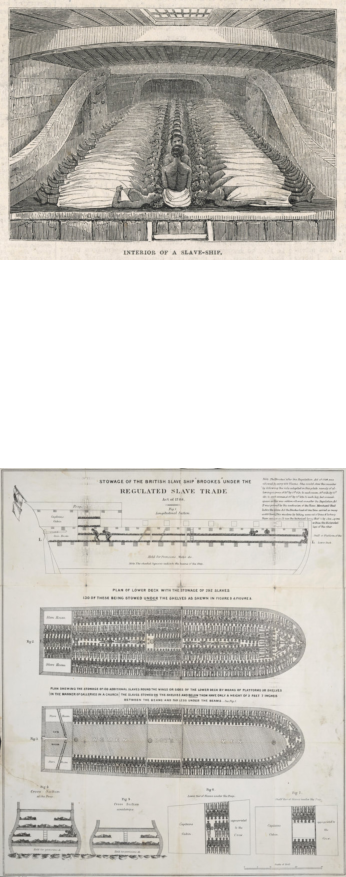
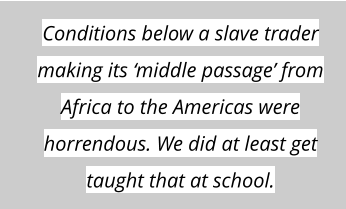
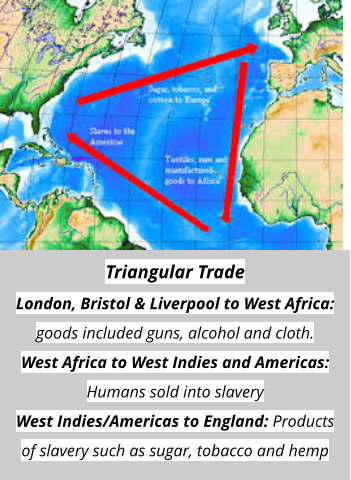
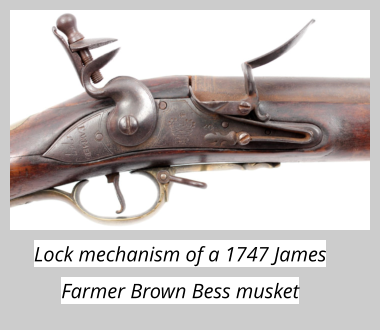
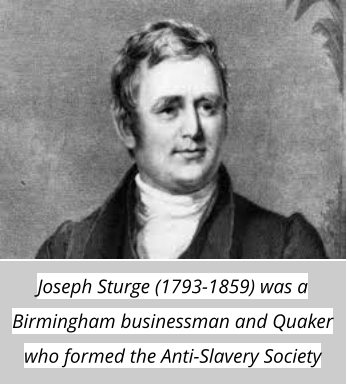
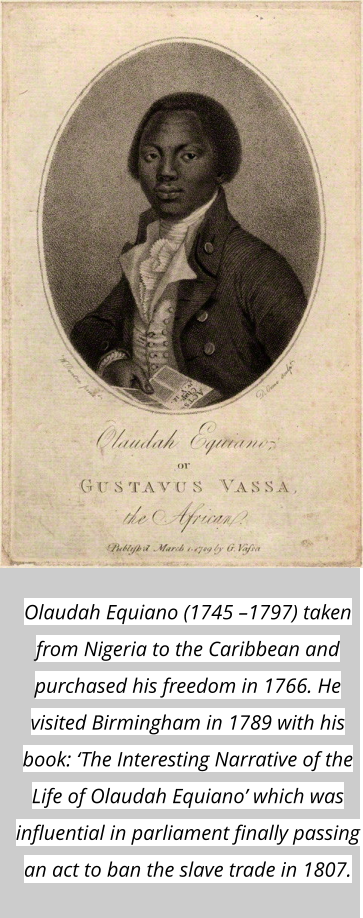
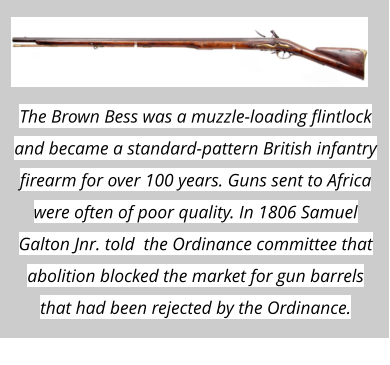
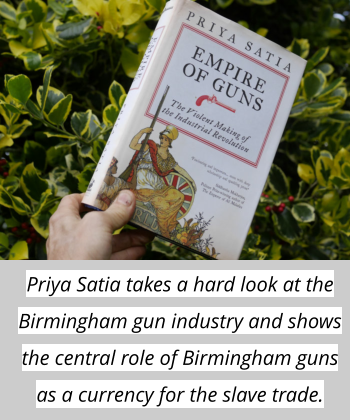
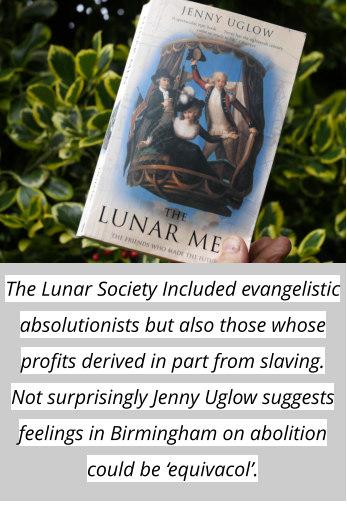
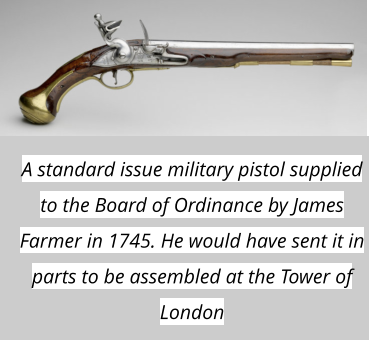
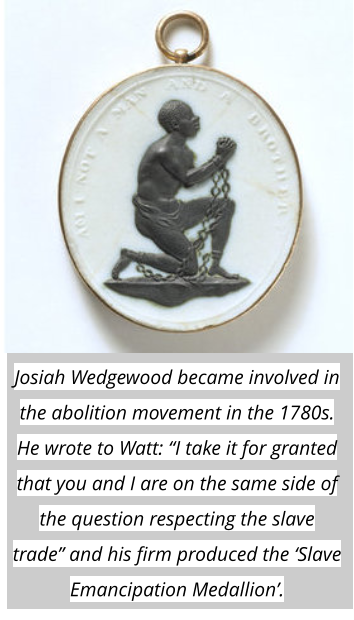
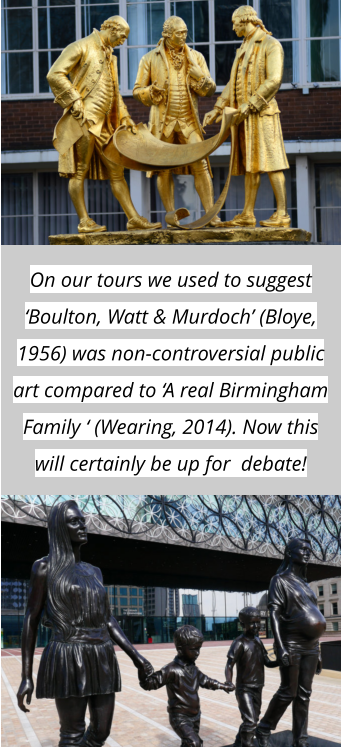
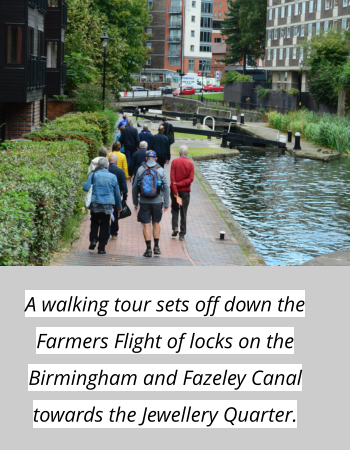
A not so pretty story:
Birmingham and the Slave Trade
